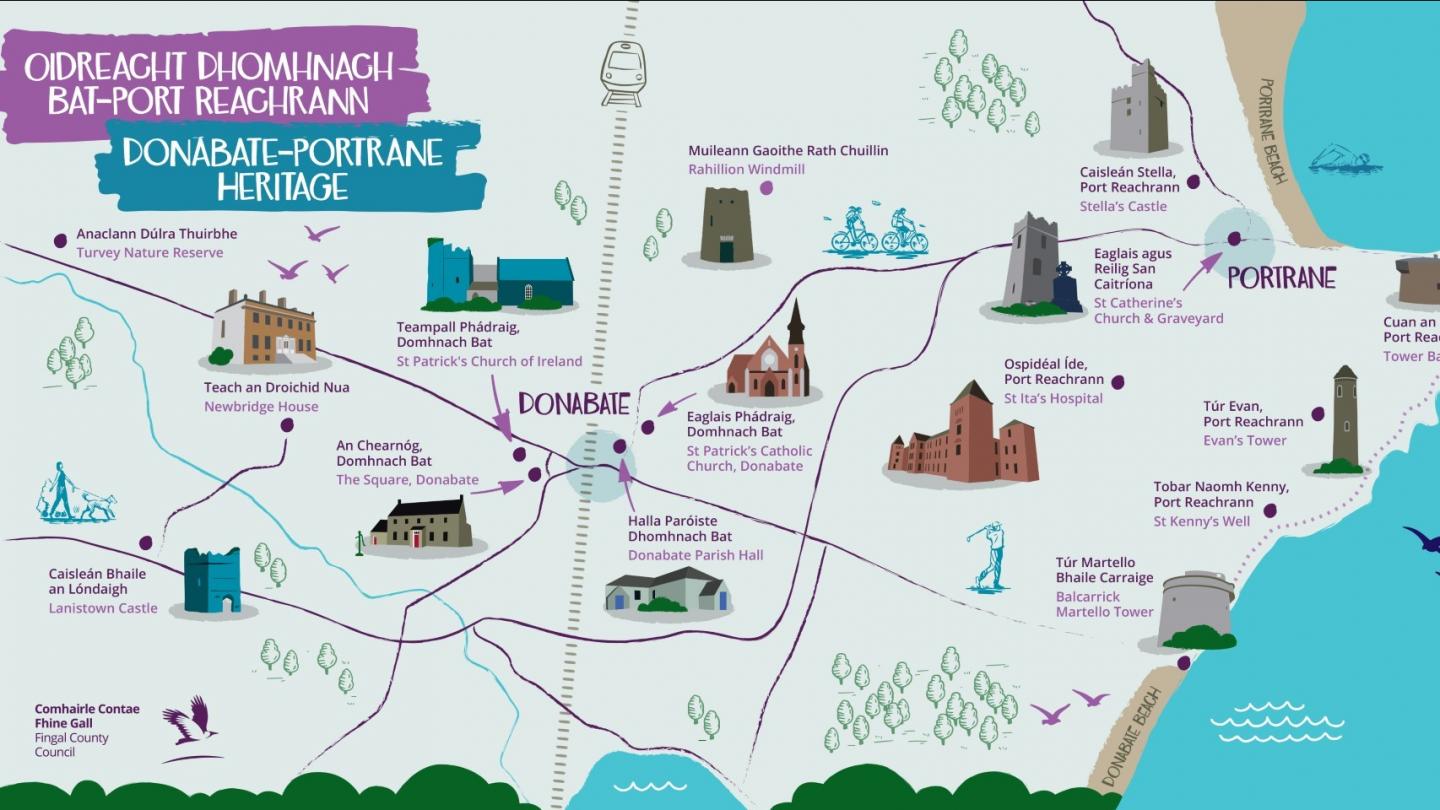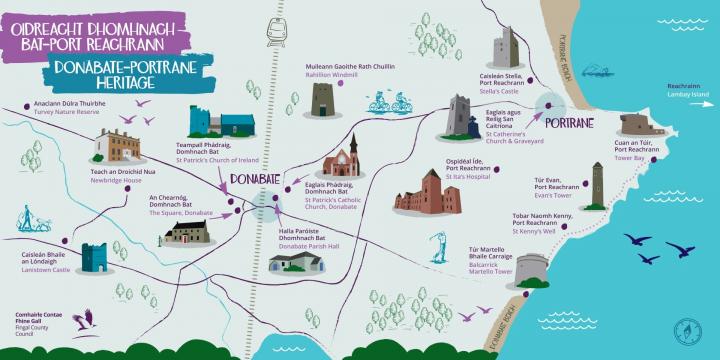
Explore heritage sites in Donabate and Portrane below.
Click to learn more about each site.
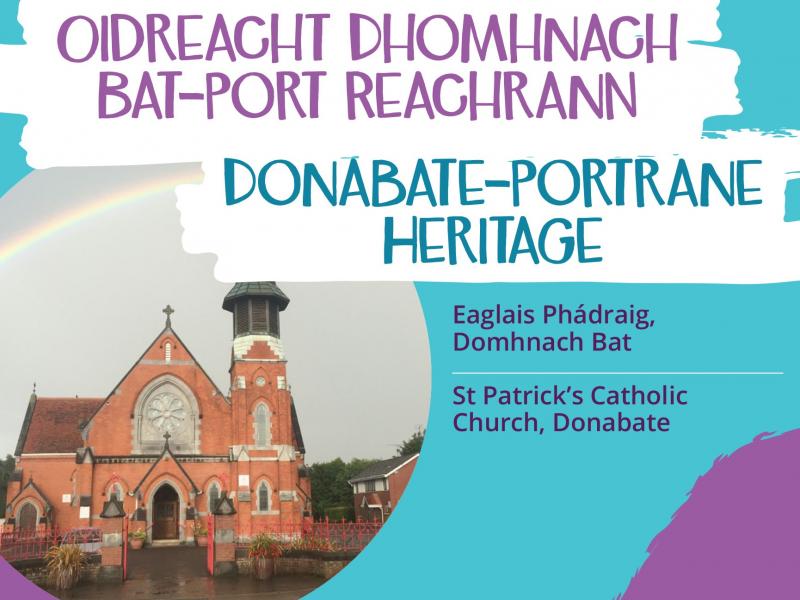
St Patrick’s Catholic Church, Donabate
Described as one of the most ornate churches in Ireland, the 1903 church was built in the Gothic style using Portmarnock redbrick.
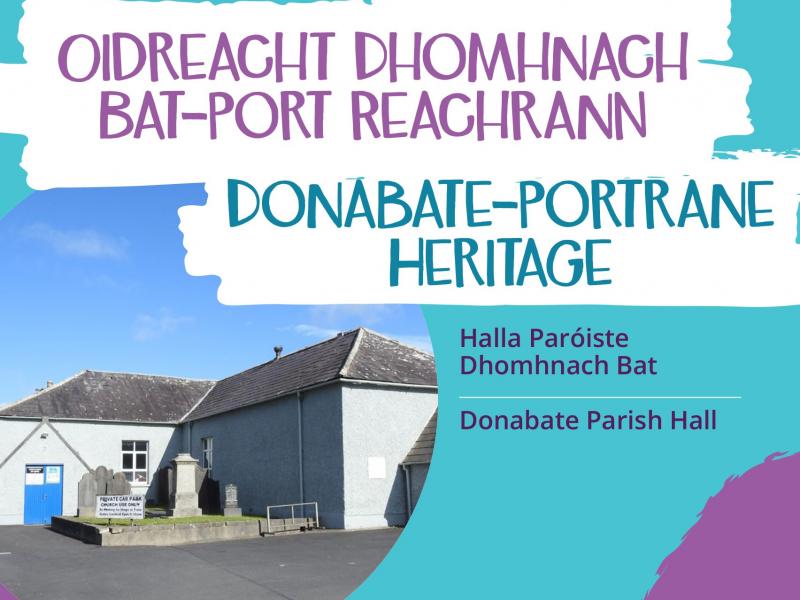
Donabate Parish Hall
From the early part of the 18th century, when bishops and regular clergy were banned under penal laws, secular clergy served the parish of Donabate from a mass house.
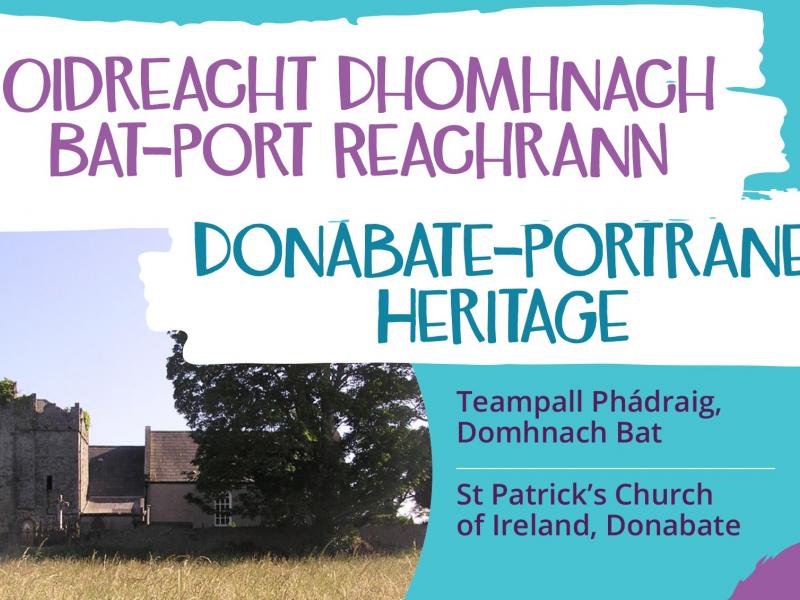
St Patrick’s Church of Ireland, Donabate
St Patrick’s Church of Ireland church (1758) occupies the site of the medieval parish church of Donabate.
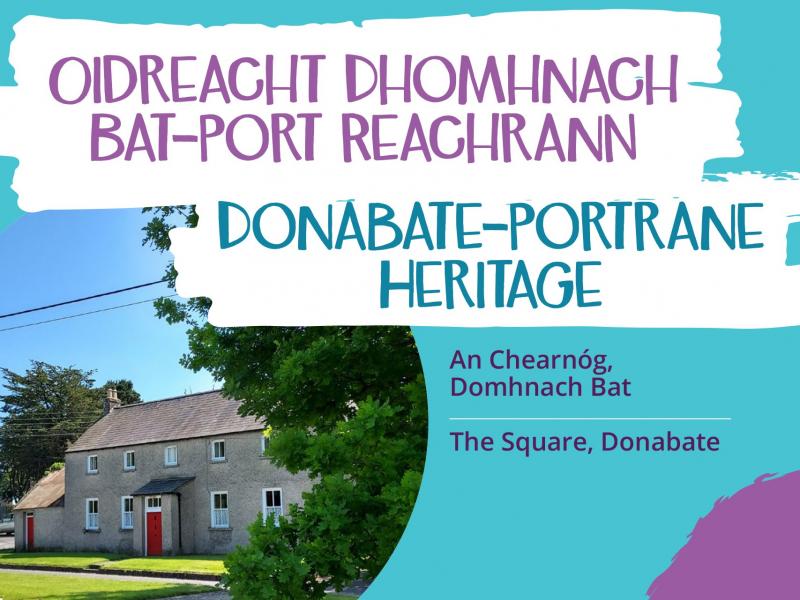
The Square, Donabate
In 1837 Donabate was described as a parish ‘containing 386 inhabitants of which 221 are in the village’.
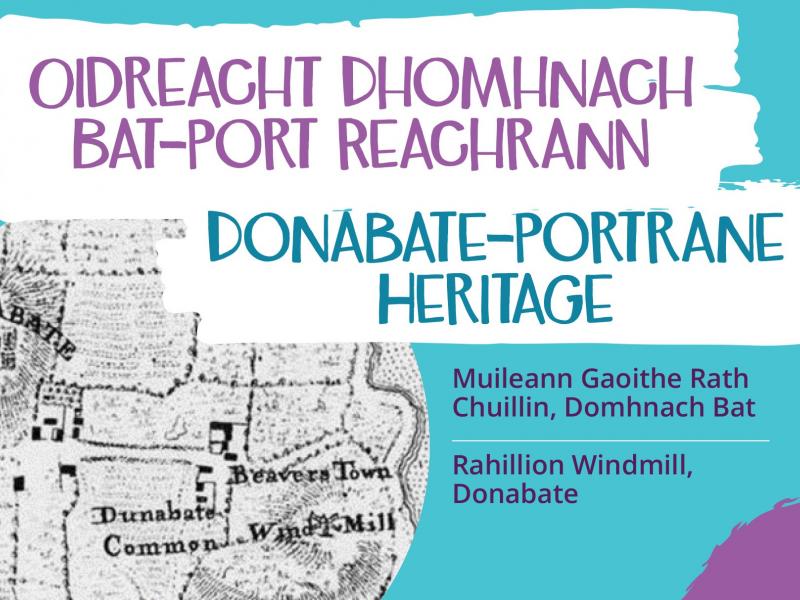
Rahillion Windmill, Donabate
Commonly called Carr’s Mill after an 18th century tenant farmer.

Newbridge House
Newbridge Demesne is the only surviving intact 18th century demesne landscape in County Dublin.
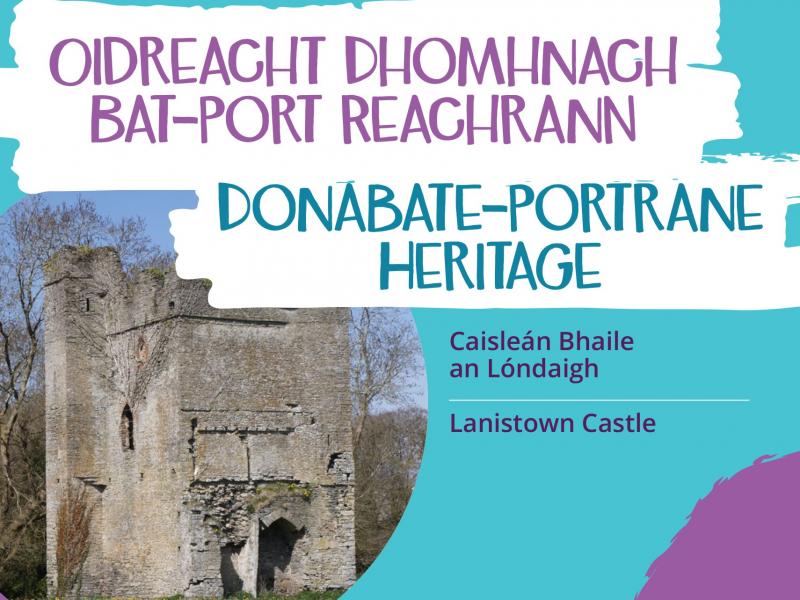
Lanistown Castle, Newbridge Demesne
Over the centuries Lanistown or Lanestown Castle served a number of purposes.
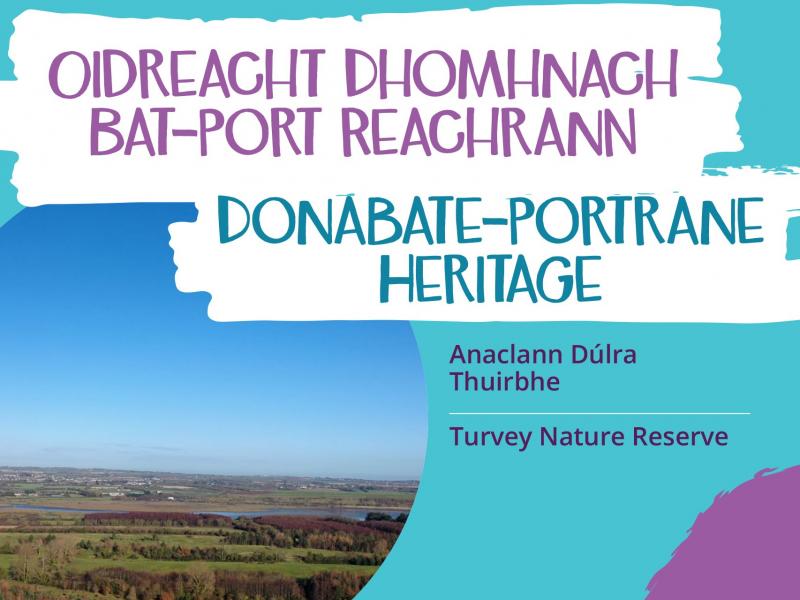
Turvey Nature Reserve
Turvey Nature Reserve, which lies along the Rogerstown Estuary features allotments, walkways, hedgerows, hay meadows, and Fingal Forest.
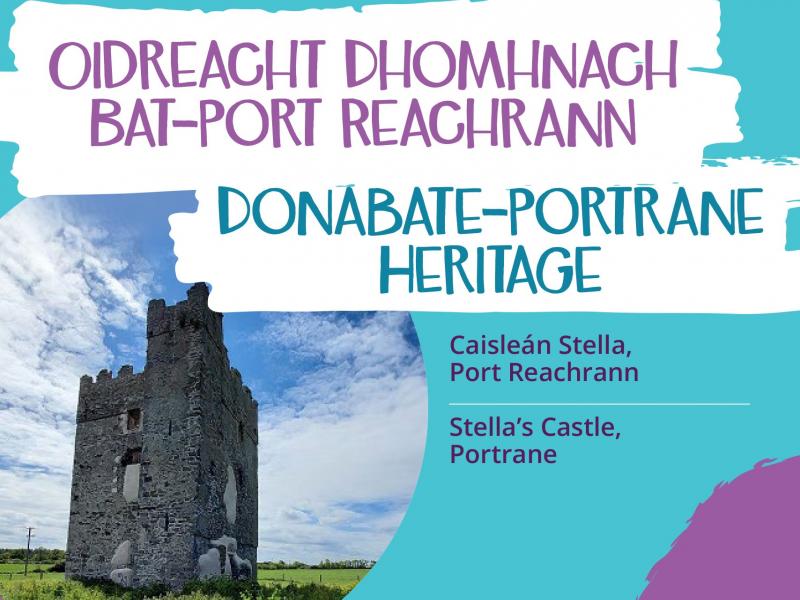
Stella’s Castle, Portrane
The Inquisition of 1541 described the 15th century tower house at Portrane as having a threshing house, hemp yard and haggard.

St Catherine’s Church & Graveyard, Portrane
St Catherine’s Church is medieval situated in a small walled graveyard, with views to the Dublin coastline and Lambay Island.
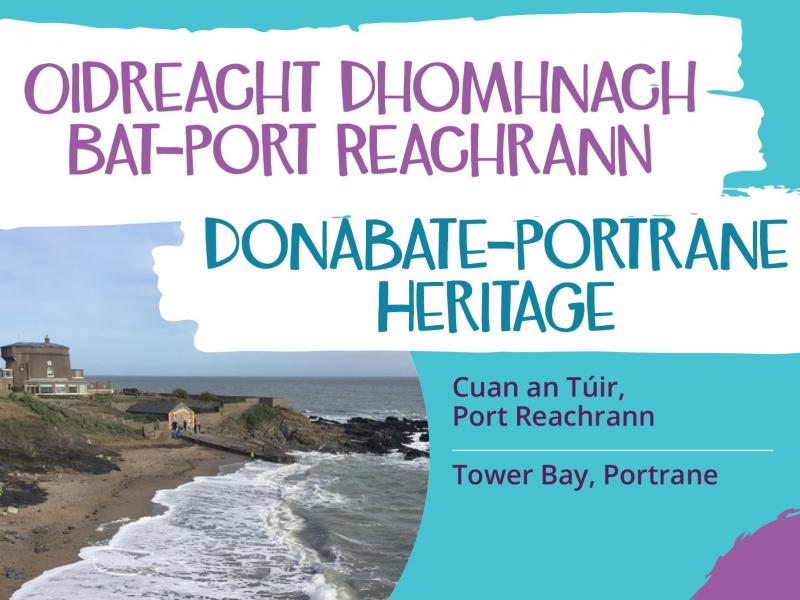
Tower Bay
Designated ‘North No.7 Portrane’ this Martello tower, now a private residence, was built in 1804.
.
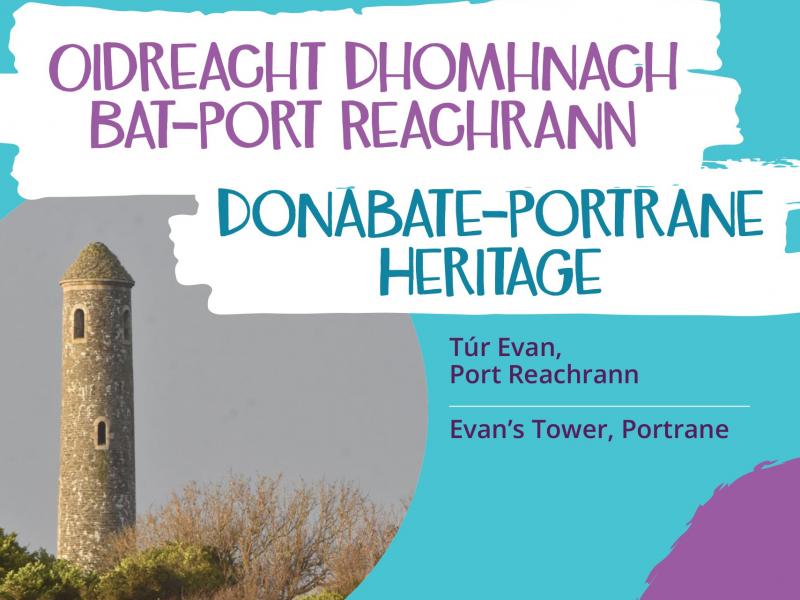
Evan’s Tower
Architect George Millar designed this 100-foot round tower at Portrane, known as the Widow’s Tower.
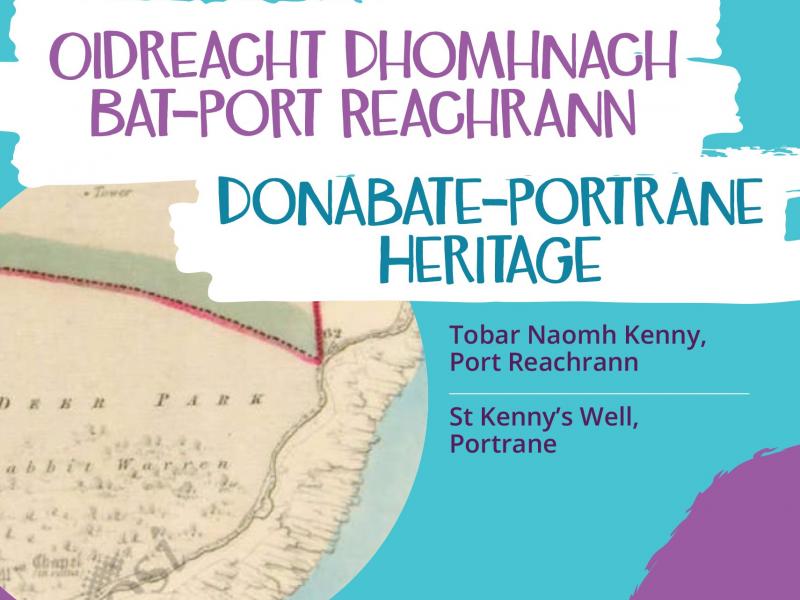
St Kenny’s Well
During the 1730s Eyre Evans, built a red brick Georgian mansion on an 460-acre estate, known as Portrane House or Mount Evans...
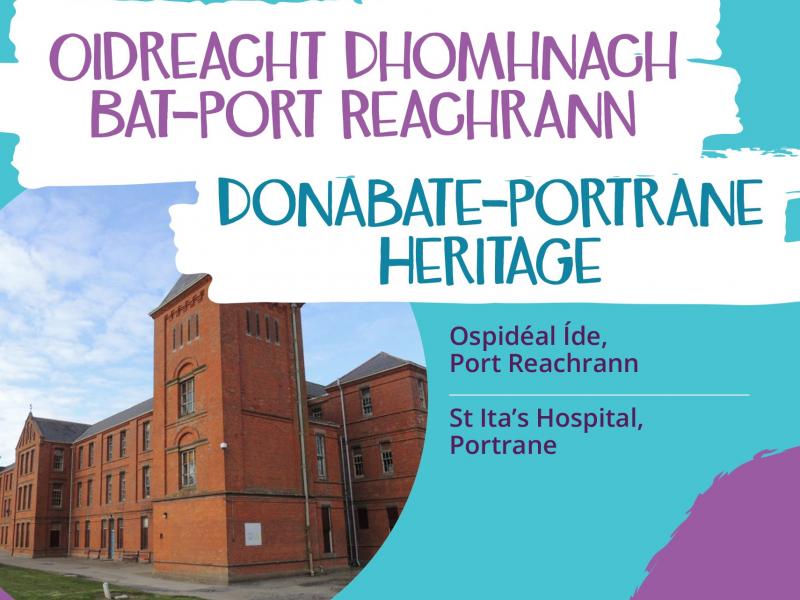
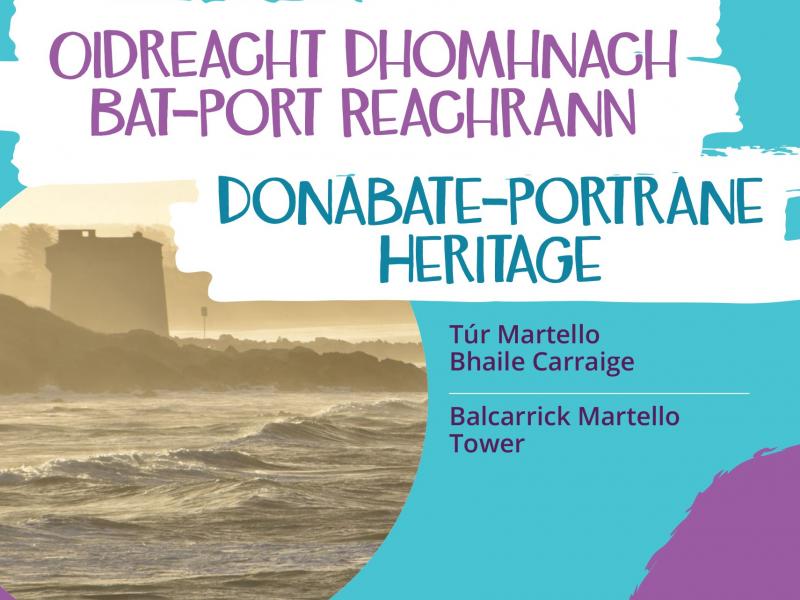
Balcarrick Bay
North 6 Balcarrick. Donabate is one of twelve Martello tower built along the Fingal coastline to defend against the possibility of invasion by Napoleon.
